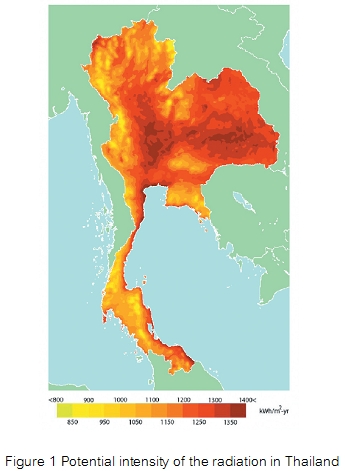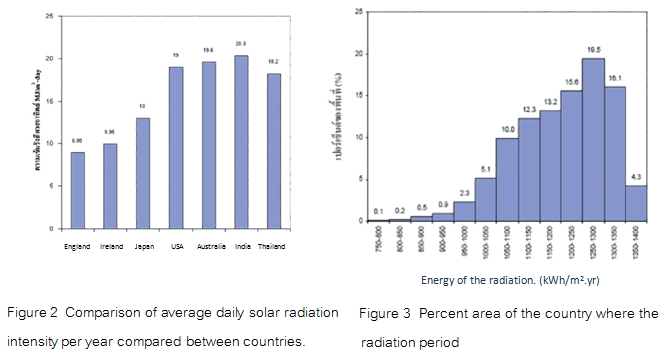Areas with solar power potential

Thailand is located in the tropical area and, therefore, contains abundant solar power source from solar heat gain. Solar is one of clean natural energy sources that can be transformed into heat and electricity. Thailand has several areas with great solar power potential including southern and northern parts of the Northeastern region at Udonthani province and certain area in the Central region. The combine solar potential area accounts for around 14.3% of the country’s overall area, gaining average daily solar exposure at around 19 – 20 MJ/m2–day, while the other 50% the country gains around 18 – 19 MJ/m2–day. Comparing with six other countries, Thailand ranks fourth, behind the United States of America but ahead of Japan. (See figure 2)
The received solar radiations include both direct and diffuse radiations. The direct radiation can generate greater electricity or heat than diffuse radiation. Peak density of direct radiation in Thailand is approximately 1,350 – 1,400 kWh/m2–yr, covering 4.3% of the country’s area in Central region and southern part of Northeaster region (See figure 2) while 19.5% of the country’s area has approximately 1,200 – 1,300 kWh/m2–yr (See figure 3). Density of direct radiation in Thailand usually escalates from January and reaches the peak in April before descending to the bottom in December.
According to the aforementioned data, some areas in Thailand have solar power potential that can be used to generate heat and electricity. The Department of Alternative Energy Development and Efficiency has conducted a number of pilot projects during 1983-2007 including 1,040 solar cell for power generation projects with a combined capacity of 2,900.816 kilowatt, solar cell standard development and testing project, solar hot water pipe equipment testing project, the study of potential production of solar cooling system project, promotion of mixed system solar hot water project etc.



